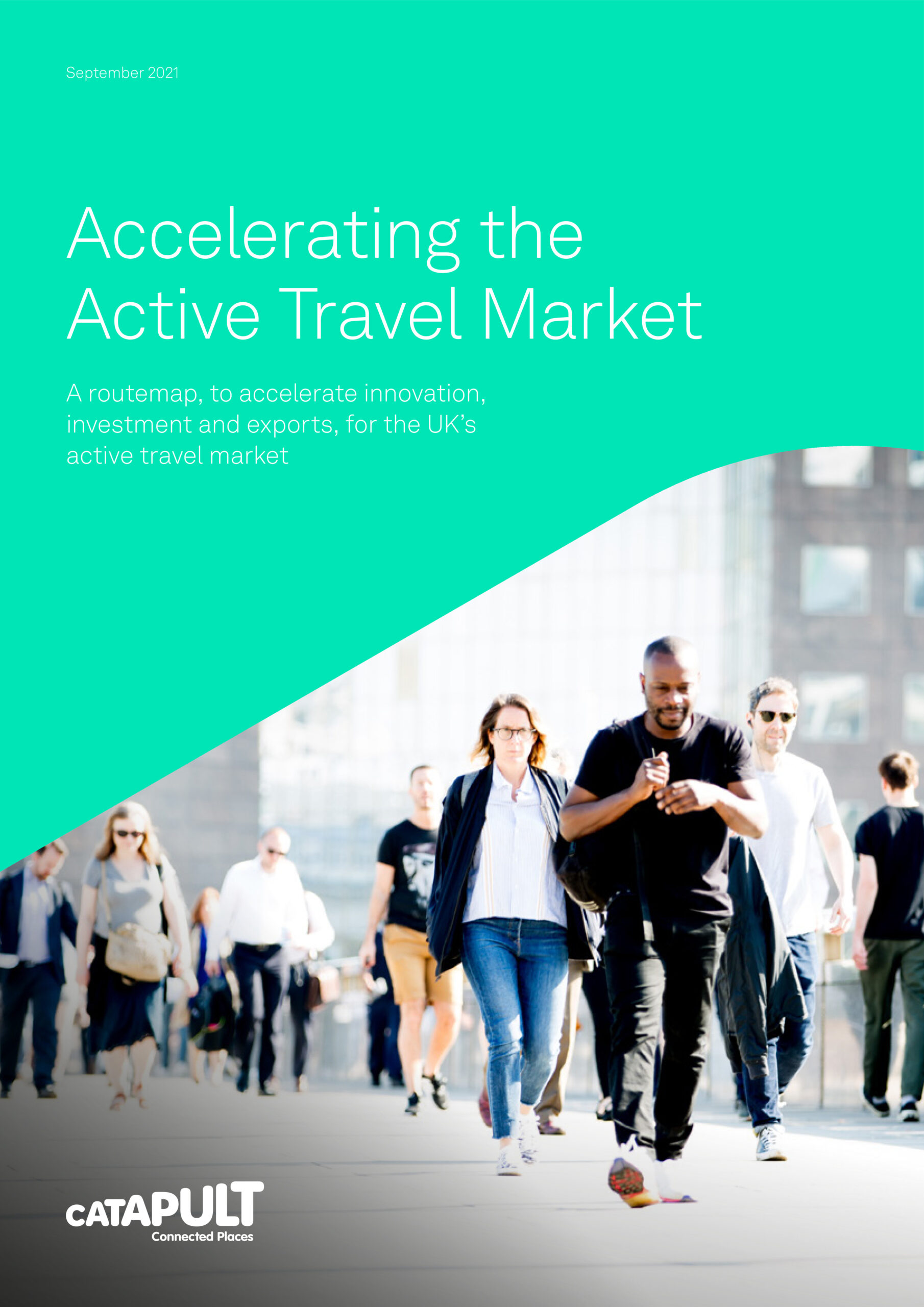A widespread network of organisations, entities, and individuals have a part to play in this global opportunity, including examples like urban designers, engineers, place makers, high-value manufacturers, and digital service providers. We explore the explosion in support for the active travel movement, the dynamic progress and case studies we have seen so far, and what it will take to drive investment.
Getting active on the road to net zero
We’re created a routemap for Active Travel in the market, which you can download below.


To capitalise on this place development opportunity, a more broad and inclusive approach is needed. In addition to cycling and running, the collective ‘active travel’ term needs to include all human-powered mobility, prioritising disabled cyclists and wheelchair users, as well as those who skate and use scooters. Taking this more wide-ranging view will contribute to the truly travel-centric connected places of the future.
Growing support
In the United Kingdom, the scene is set for the promotion of active travel initiatives. The Department of Transport has issued a range of announcements that include major financial support, including the ‘Gear Change’ announcement that unveiled a £2 billion investment, featuring a £250 million Active Travel Fund and a £200 million Active Travel for Schools fund. On top of this, a public body called Active Travel England has been launched, tasked with ensuring that the new plans and resources are being adequately deployed.
Active travel is also being promoted in other ways by the UK government, with new policy measures put in place that encourage GPs to prescribe running and cycling to enhance wellness. The necessary infrastructure required to support active travel plans is also being implemented by the government, including increased investments in secure bike parking. Trials to support the legal use of e-scooters has also been fast tracked in the UK, as have plans to combine public transport and active travel options.
A new ‘bikes aboard’ policy has been demonstrated by East Yorkshire bus services and Go North East, with the goal of encouraging commuters to take a hybrid approach to their journeys. Apps and AI also have an influential role to play in driving active travel plans, and this is being exemplified by a partnership between Go-Ahead Group and Stagecoach. This innovation enables customers to plan to travel during quieter times and have insight into how busy the next bus will be in real-time. Popular names like Strava are also supporting the initiative via their dynamic applications.
Great global strides
With the right policy and infrastructure foundations falling into place in cities across the globe, there are already numerous examples of impactful active travel progress taking place. For example, in London and several other major cities around the world, road space has been re-allocated away from private vehicle use to encourage active travel. This not only promotes improved health and fitness, but it also reduces emissions and improves air quality in key locations.
Cycling is now on the EU Green Deal Agenda of the European Commission, with in the region of 20 billion euros set aside for investment. As part of this commitment, cargo bikes and electric bikes are playing an important role, with year-on-year sales growing to nearly 40%. To cite another European example, in the world-famous cycling hub that is the Netherlands, over half of new adult bikes sold in 2018 were electric.
Cargo bikes are particularly well suited as a solution to a range of specific challenges. There is an opportunity for them to be used to support a more sustainable approach to the 90% of goods being transported via road in the UK. There is a particularly powerful use case for them in the instance of last-mile delivery, which is a primary driver of emissions that urgently needs to be tackled.
New concepts will also have a vital role in promoting active travel, and the Fifteen Minute City, introduced by French-Columbian scientist, Carlos Moreno, is a prime example. This approach to place development and design aims to position homes within a fifteen-minute walking distance from amenities like shops, schools, and parks. This concept has been taken up and popularised by Mayor Anne Hidalgo in Paris, opening opportunities for developers and technical innovators.
Driving demand, investment, and planning
The ambitious target of achieving Net Zero emissions by 2050 can only be achieved through radical innovation and optimising the way people and goods move is a key component of this. The Connected Places Catapult is supporting place leaders in the process of devising new active travel strategies, and by providing advanced data modelling tools.
We are collaborating with influential entities within business and academia alike, with the goal of encouraging future interest in this technical and cultural shift, and to inform much needed investments.














